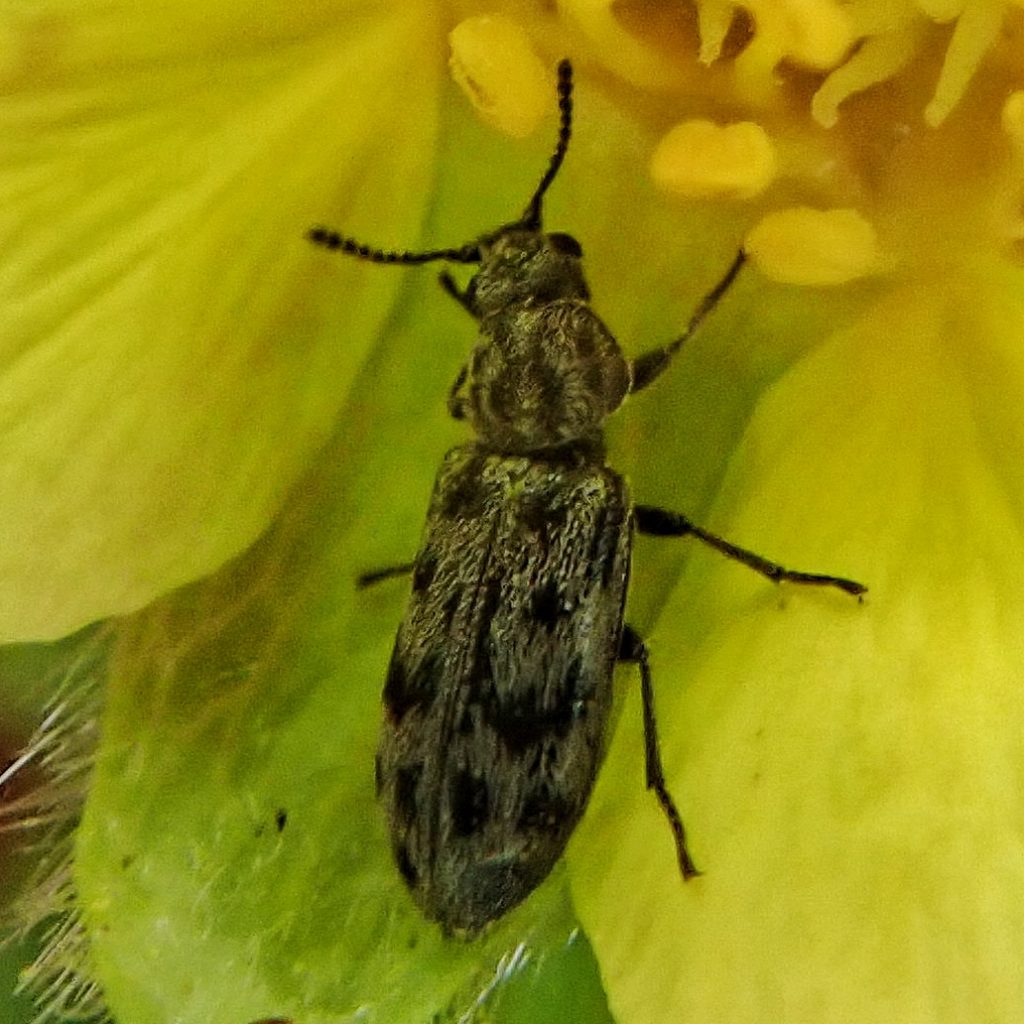
I can say with certainty that these beetles are something in the genus Listrus, but once again I am invoking the ‘no genitalic dissection’ exemption. Even in Merrill Peterson’s masterful field guide “Pacific Northwest Insects” he doesn’t list a species, just a photo titled ‘Listrus sp.’, with the comment that the PNW “…has more than 20 Listrus spp. For most, accurate identification requires examination of genitalia.” On bugs that are only 2-4mm long.
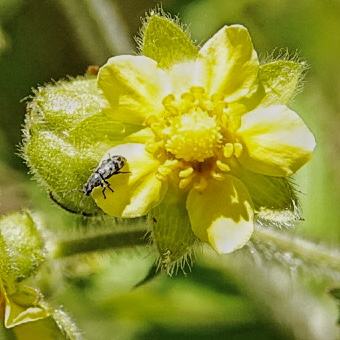
Even were I to attempt this task, the odds against me excising a minuscule organ without mangling it are astronomical. No thanks. My pantry is already well stocked with things I can fail at. So it appears that, as someone who is not a practicing entomologist and doesn’t have the motor skills of a neurosurgeon, I am going to have to learn to accept a level of ambiguity in some of my identifications that I hadn’t expected to encounter. I’ve decided that I can live with that, and I hope my readers can also.
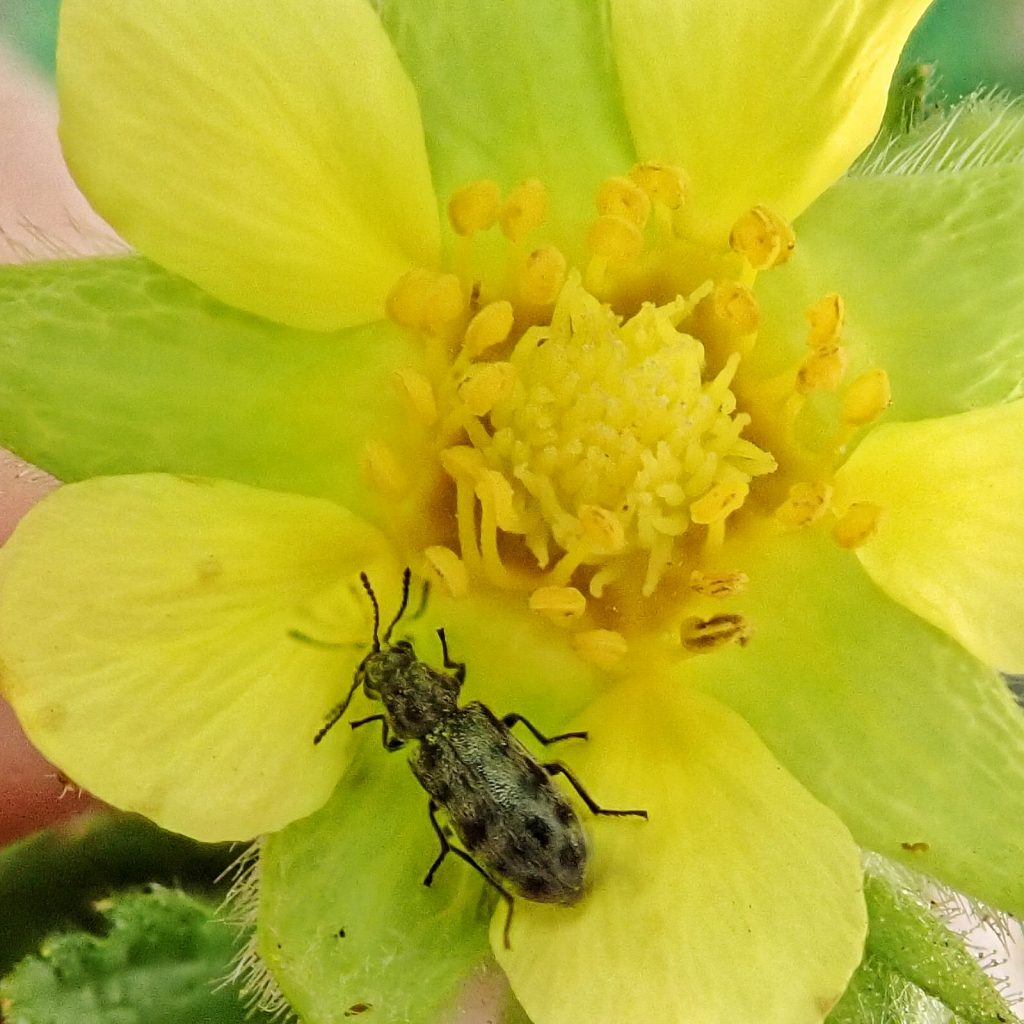
These are members of the family Melyridae (soft winged flower beetles), and of the subfamily Dasytinae, about which JR Mawdsley remarked in a 1999 paper that “…The subfamily Dasytinae of the beetle family Melyridae must certainly rank among the most poorly-known groups of Coleoptera in North America.” And that has been my experience in attempting to research this profile.
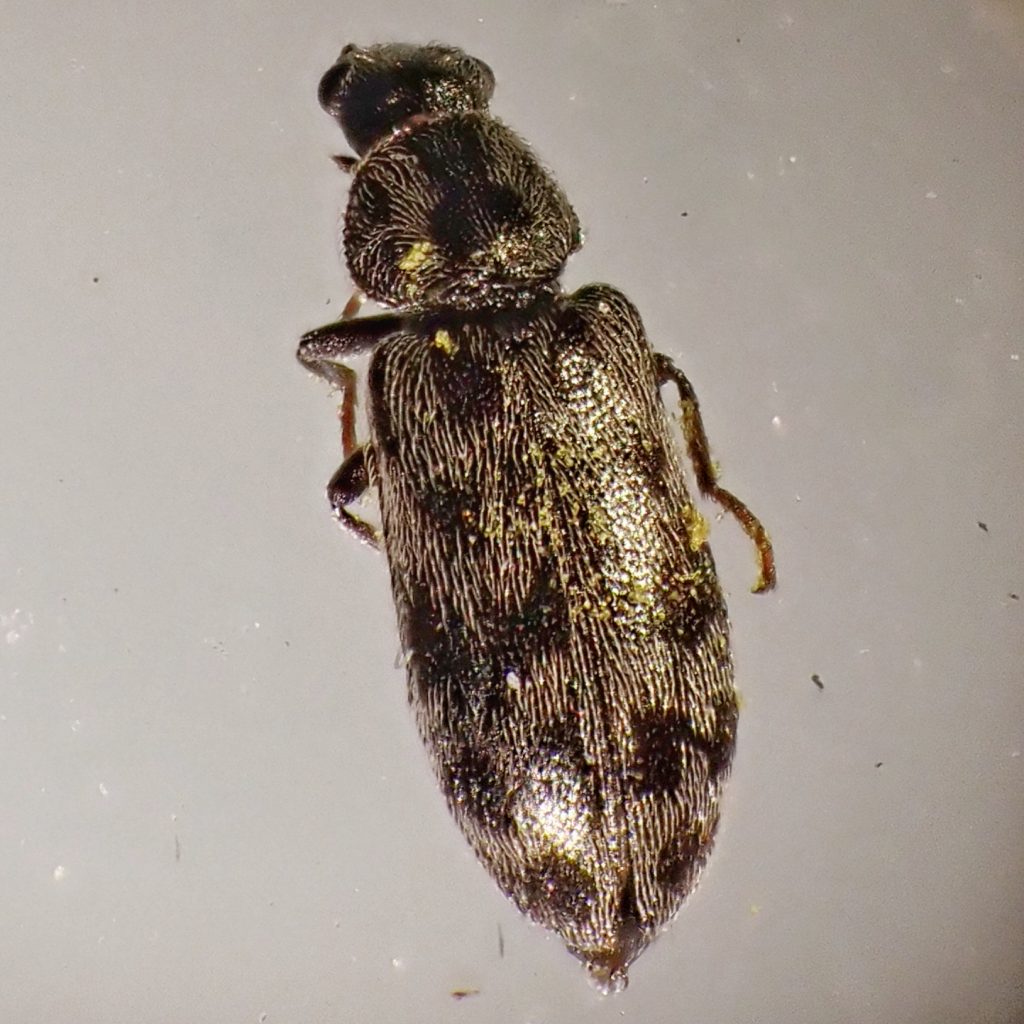
Members of Dasytinae (which has often been treated as its own family, the Dasytidae) are possibly the most important pollinators in the order Coleoptera (beetles). The reasons for this are threefold, the first being that the adults, which are nectar and pollen feeders, are usually hirsute and therefore collect significant pollen on those hairs, which is then distributed to the other plants they visit. They also, as a group, visit a very wide variety of flowers (members of Listrus are known to feed from 26 different families of plants) in many different families.
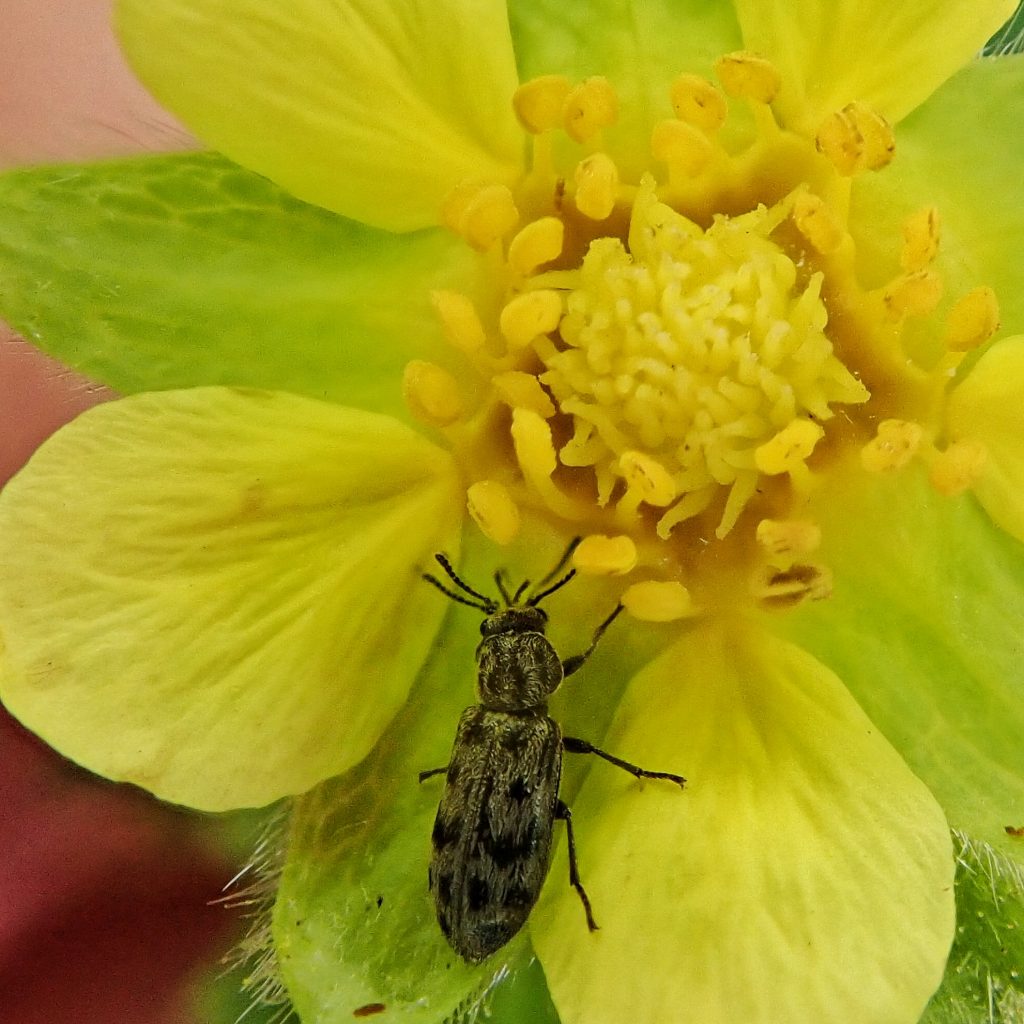
And where there are some they are frequently abundant. In the paper referenced above Mawdsley reports finding 660 specimens of Listrus senilis in a one acre field! This abundance really abets and encourages genetic diversity. The ones shown here, most of which are on Drymocallis glandulosa (sticky cinquefoil) or Cerastium sp. (chickweed), were part of dozens we found visiting flowers on the cliff edges along the Cape Horn Trail in Skamania County, Washington.
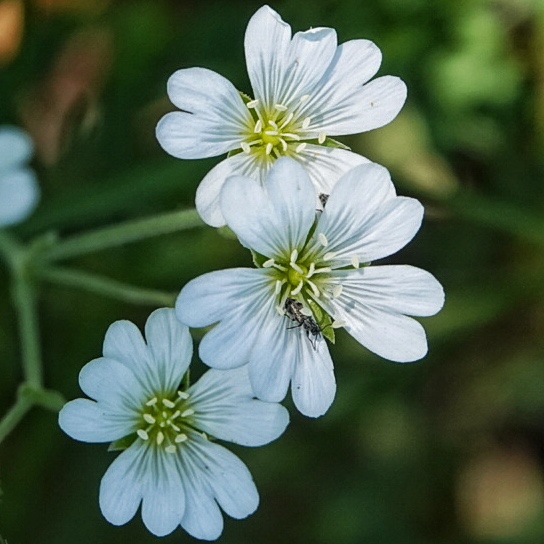
Description-Small (2-4mm), grey with black spots and lines; the grey is pubescence, and the black is where their is either no hair, or very fine, short, sparse black hairs; elytra are ± parallel along the outside margin for most of their length; pronotum slightly narrower than the ‘shoulders’, with rounded lateral margins; head narrower than pronotum.
Similar species-There are Listrus spp. that are all grey, and a couple with a different pattern of grey and black, but I cannot seem to ascertain what they are to rule them out, and the majority of the Listrus spp. in our area look just like these.
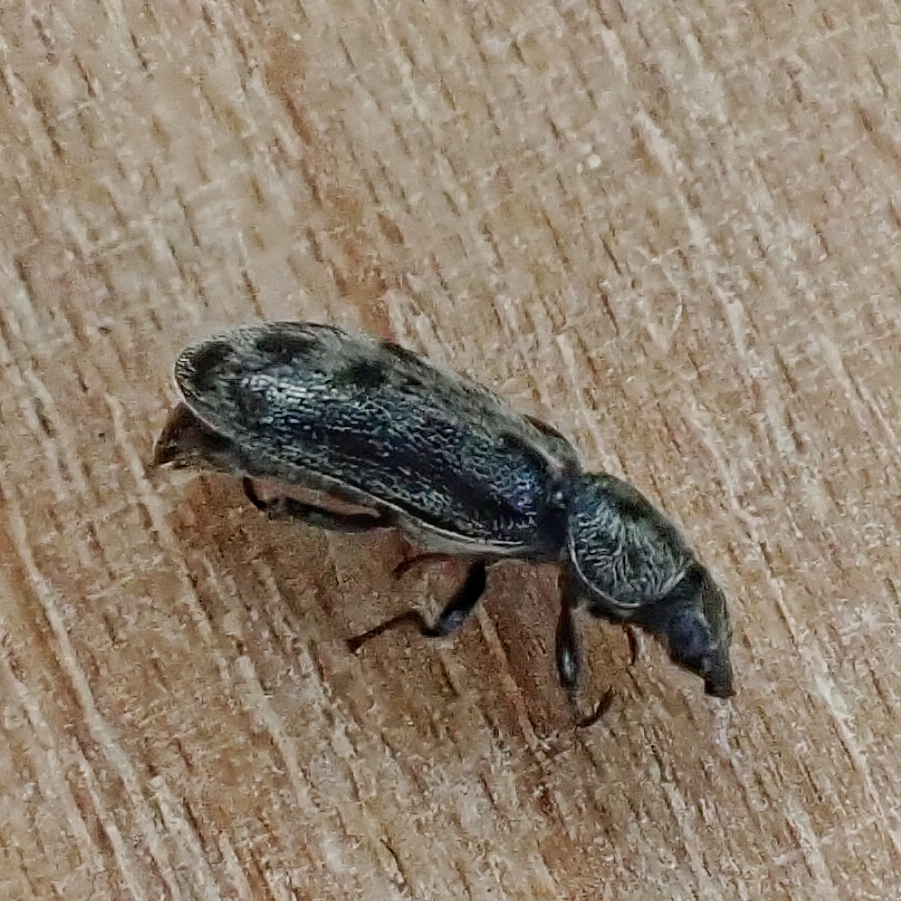
Habitat– Wherever there are flowers
Range-North America; region wide in appropriate habitat; more species diversity in more arid territories.
Eats– Larvae eat detritus,fungi, and the eggs and larvae of other invertebrates; adults eat nectar and pollen.
Eaten by– Presumably anything that can find them.
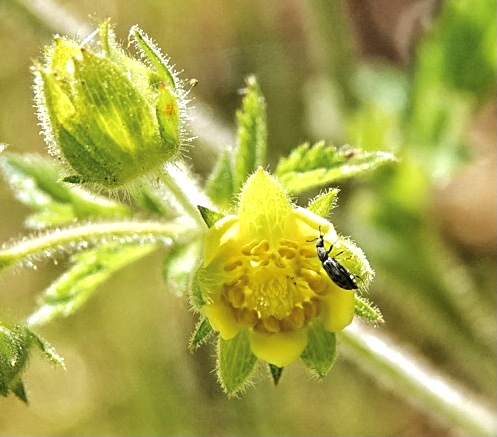
Reproduction– Larvae are known to burrow into sand and other mineral soils.
Adults active– March to August
Etymology of names–Listrus may come from the Greek for ‘a digging or leveling tool’, but I cannot confirm that, and have no idea what it might reference, although the propensity of the larvae to dig into sand may have some relevance.
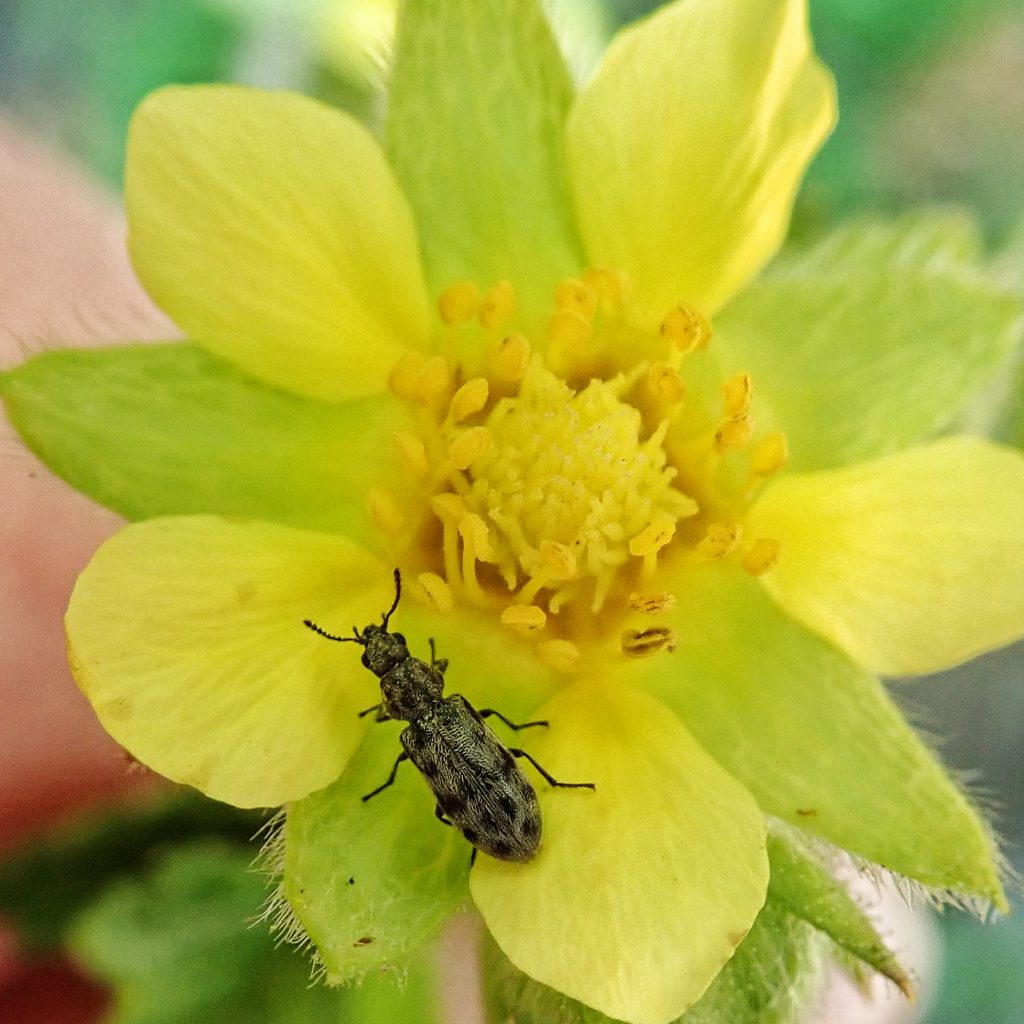
https://bugguide.net/node/view/40905
https://www.jstor.org/stable/4009711
https://www.jstor.org/stable/25010294
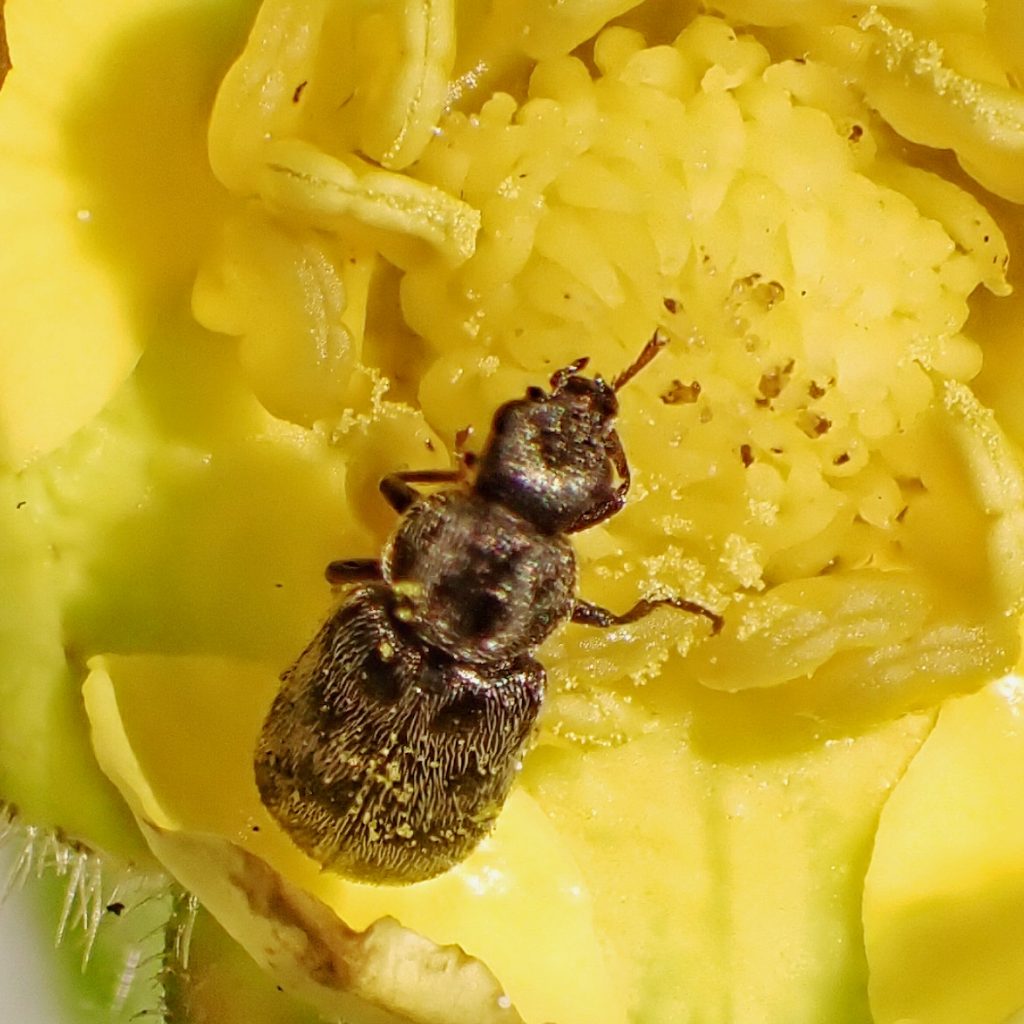
Great pictures of this hairy little super pollinator! Thank you ☺️
I just found a Listrus sp. on Lomatium watsonii growing at 6,250 elevation in the east Cascade mountains. I have a photo if you are interested.